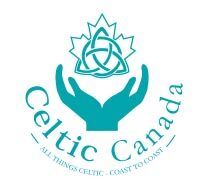This quarter’s article covers two very different subjects. One is a subject that has caught plenty of media attention in Canada. The other is a subject that has had little or no attention and is often overlooked. Yet, both items will impact how much of your money that you get to use.
Good news for savers The Federal Government announced budget changes that will benefit those that are saving for retirement or other goals. In general, these changes improve the tax advantages of saving and result in less tax being paid. Here are some of the highlights that impact families:
Changes in Registered Retirement Income Funds (RRIFs) When you are ready to take income from your RRSP you may change it to a RRIF. At age 71 your RRSP must convert to RRIF. There are minimum annual withdrawal rates that apply to RRIFs. So, you have to take a set minimum amount of money out of your RRIF each year, and pay income tax on it. The recent budget plans to relax these minimum withdrawals by as much as 28% after age 70. This means that seniors at age 71 can leave more money in tax-sheltered RRIFs. Also, for some, it means that the dreaded OAS clawback can be reduced or even eliminated.
New Tax Free Savings Account (TFSA) limits The Federal Budget also proposed to increase the annual TFSA limit to $10,000 from $5,500 for the 2015 tax year. This means that individuals can contribute more money to a tax-sheltered TFSAs. Canadian taxpayers can top up their TFSAs effective immediately, without waiting for the federal government’s proposed expansion to become law. The cumulative TFSA room for an individual that was age 18 in 2009, is $41,000 (less any net TFSA contributions). So, there is plenty of opportunity save for the long-term or medium-term using a tax-sheltered TFSA.
Don’t miss out on Irish state pensions and benefits If you have lived or worked in Ireland and in Canada, or if you are the survivor of someone who has lived or worked in Ireland and in Canada, you may be eligible for pensions or benefits from Ireland or Canada, or both. Canada and Ireland have had an Agreement on Social Security since 1992. The agreement defines how both government plan work together. The agreement is very extensive and complex (Justice Laws Website SI/92-53).
The Irish payments covered under the Agreement are: • State Pension (Contributory) • State Pension (Transition) • Widow’s, Widower’s (Contributory) Pension, • Guardian’s Payment (Contributory), • Invalidity Pension, and • Bereavement Grant.
The Canadian payments covered under the Agreement are: • Under the Old Age Security (OAS) Act: o basic Old Age Security Pension, o Guaranteed Income Supplement, and o Allowance. • Under the Canada Pension Plan (CPP): o Retirement Pension, o Disability Benefits, o Survivor’s Benefits.
You may qualify for social welfare payments based on a combined Irish and Canadian contribution record. So, if you do not have enough contributions on either record alone you may still qualify by combining contributions. The rules and steps to follow to navigate and understand the administration of the benefits in each country are complex. It gets even more complex when programs from other countries are combined. Don’t let this stop you from understanding the social programs and how they are intended to work for your benefit.
Colin Barry, Canfin Financial Group, is a Certified Financial Planner (CFP) who works with families and small businesses to plan their finances and make the most of what they have. Visit www.colinbarry.ca for more information. Fee for service financial planning and investments provided through Canfin Magellan Investments Inc. Insurance provided through Canfin Capital Group Inc.








